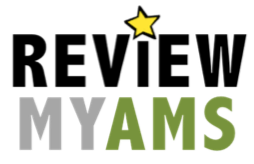Guest post by Rick Rutherford, Writer, Speaker, and Association Technology Evangelist
For more than 15 years there has been a great amount of research, discussion and a little teeth grinding about the Digital Divide – and as often the case, associations find themselves in the middle of the discussion as a reflection of society at large.
It the association world this can be manifested as an organization that is resource challenged in the way the manage day-to-day operations. Smaller state and local chapter associations often experience this as they fight to gain access to, and integrate new technologies for their constituencies. And as fast as tech advances, causing disruptive shifts in the business world these nonprofits live in, it is often a never ending game of playing catchup.
Unfortunately, there are still a good number of associations that only use spreadsheets as their primary tool for membership management functions (gasp!). The idea of purchasing an AMS to help with the automation of administrative services is often out of their reach. These organizations find themselves bogged down by manual administrative processes, unable to focus on creating the programs and services needed to drive engagement and deliver a valuable membership experience.
This can pose a different type of challenge when looking at the relationship between national associations and their chapters. Relationships between nationals and chapters can often be complex as each tries to maintain a level of autonomy that allows them to best serve their constituents. How are they impacted when the national is the “have” and the chapters “have nots” is regards to tech resources?
One company that is taking this challenge head on is Billhighway. Their approach is to work with national organizations to create a stronger partnership with its chapters, according to Kyle Bazzy, Director of Growth for Billhighway. For the company, the process begins at the top working with the national to fully understand its needs and taking that to the chapters. It is a niche where they have decided to dedicate their focus. Quite simply, Billhighway strives to make nonprofits more efficient so as an organization they can focus on improving the lives of others.
As Bazzy commented, “No two nonprofit organizations are the same. For Billhighway to be a partner with any group means working closely together with leadership to identify and configure the right solution that will meet that organization’s unique needs.”
They do that by uncovering potential obstacles during the discovery process while gaining a full understanding of the organization’s goals. This allows Billhighway to create a solution that overcomes potential roadblocks and allows the organization to realize its goals. That can often result in a streamlining of business processes to gain greater efficiencies in the daily management of the organization’s business. This in turn can create greater transparency and collaboration between the national and its chapters, creating a stronger overall relationship that benefits the membership.
“Efficient dues processing and management is critical to a health of any organization,” Bazzy added. “Whether the organization is comprised of local affiliates, or regional chapters, full visibility into the organization’s membership and finances shouldn’t be complicated.”
Another part of equation that chapter based associations need to consider is how easily accessible technology is today. For Bazzy it should be looked as a warning sign as chapters can find it much easier to go rogue.
A case point is the disruption that began in the Fall of 2015 for Alzheimer’s Association, as six prominent chapters disaffiliated the organization. They serve a collective population base of more than 38 million individuals and represent a combined annual budget of almost $24 million annually.
“The national organization has become increasingly less focused on grassroots care,” said Alzheimer’s Texas Board Chair and Board Certified Neurologist Dr. Ron DeVere. “This was crucial to our decision because, in the absence of a cure or effective therapy for Alzheimer’s and other forms of dementia, the best and only ‘medicine’ is good care. That requires working with families in a close, interactive, and personal relationship that takes time and compassion.”
There is little doubt that technology will continue to force change for many associations and nonprofits in the way they conduct business with their chapter/component organizations. While programs and services are becoming more and more virtual to provide greater access to constituents, it will fall upon the leadership of these organizations to ensure communication and collaboration with chapters keeps pace with the ever increasing demands and expectations of members.
Learn more about Billhighway and how they are improving the relationship between associations and their chapters.
Kyle Bazzy
Director of Growth
Billhighway
Connect on LinkedIn
